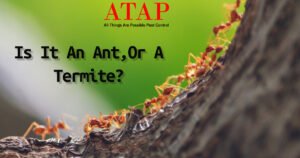Almost every week at this time of year, we get calls from worried homeowners who aren’t sure if It’s An Ants or A Termite in and around their homes. They remark, “They appear like ants, but they have wings.” “Can you tell me what they are?” Is it possible for you to send someone to have a look at them? “How much would fumigation services near me cost and how much would this set you back?”
Without seeing the mysterious pest, it’s tough to respond to their questions. Flying ants and flying termite swarmers are similar in size and appearance; the most notable difference between the two pests is the amount of money required to fix the problem — and, in the case of termites, to repair the damage.
When attempting to identify your mystery bug, keep the following in mind:
-
Body.
While both ants and termites have three different segments (head, thorax, and abdomen), an ant’s segments are far more distinct. Termites, on the other hand, have a straight body.
-
Wings.
Each of them has four. Termites have uniformly sized wings, whereas ants have two large front wings and two smaller back wings. The veins in the wings of an ant are dark, while the veins in the wings of a termite (which might be twice as long as its body) are virtually invisible. A termite’s wings can also be easily separated.
(The presence of small wings on and around window sills is one of the most common symptoms of a termite swarm.)
-
Antennae.
The antennae of a termite are comparatively straight and smaller than the antennae of an ant, which are long and elbowed.
-
Legs.
The legs of an ant are longer than the legs of a termite.
What else is there to say? Take a moment to browse around if you’re still unsure. Is there any evidence of wood damage? Termite tubes making their way up the foundation? Are there any detachable wings laying around? Termites are most likely to blame, however carpenter ants can also harm wood by excavating it rather than eating it. More likely to be found in the kitchen than the garage with that old wood pile.
Call ATAP at (708)375-1160 or a Chicagoland pest control if you’re unsure and want more assistance on finding out. We don’t charge for identifying samples, and we’ll be happy to come out and examine your mystery pest from field rodents to The Brown Widow Spider and make treatment recommendations as well.
